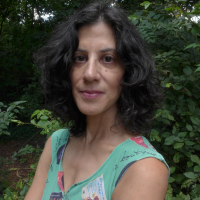
I record myself reading a poem while completing it, and in the process of the recording, I start singing. The goal isn’t to get the recitation right, but to bring song into the poem when it’s missing. This often gets me from one draft to the next. The technique of putting speech and song together is called sprechstimme, and it was pioneered in 1912 by the composer Arnold Schoenberg for his song cycle “Pierrot Lunaire.” Once I started collaborating with musicians, I began teaching myself to use my voice in different registers. My speaking voice became an instrument. At first, I wanted to borrow from the rhythms that musicians were using, but then I realized that I could borrow rhythms from my own speech.
This process was accidental and backwards. It began with finished poems and made its way into poems that weren’t working for me. When I record a finished poem, I add pitch changes, high-low sounds, yelling, whispering, repetition. This emphasizes different aspects of a line, and tells me what the speaking voice can do after the speech has already been created. It’s electrifying. But equally exciting is the utilitarian experiment that lets me collaborate, like a musician, with my own text. By singing the poem, or to it, and merging speech with song, it really takes the pressure off of what to write next.
—Diane Mehta, author of Tiny Extravaganzas (Arrowsmith Press, 2023)
Photo credit: Jerry Sticker







